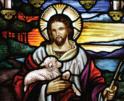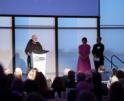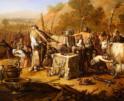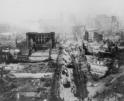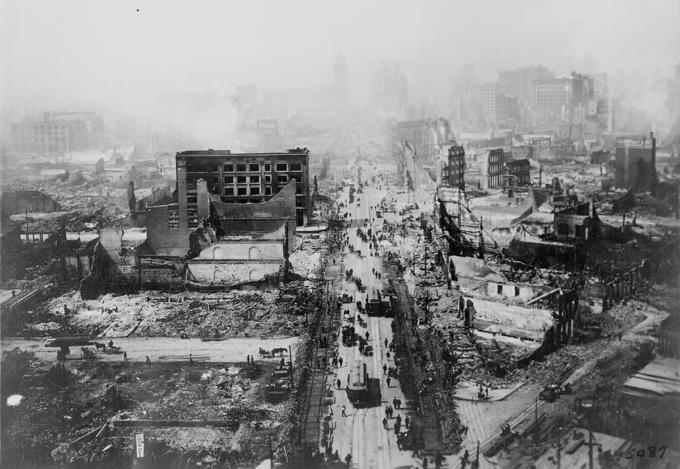
Culture

It was feared that there was extensive damage to religious institutions, including churches, convents, schools, and charities; the Review estimated $5 million in damage while The Pilot estimated double that amount.
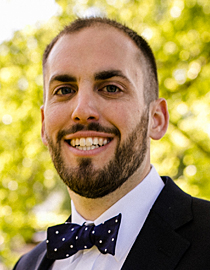
Lester
In the early morning hours of April 18, 1906, Californians were awoken by what the U.S. Geological Survey calls "one of the most significant earthquakes of all time." Several shocks occurred throughout the day, and the fires that resulted laid waste to much of San Francisco, leaving hundreds of thousands of residents homeless and without food or water. Across the country, everyone from government bodies to private citizens, including the Archdiocese of Boston, worked to aid those affected by what The Pilot referred to as "the greatest civic disaster in the history of America thus far."
Shortly after 5 a.m. on April 18, a foreshock took place followed less than a minute later by the first major instance. While the epicenter was near San Francisco, its devastating effects were felt among a much wider area extending into neighboring communities, and tremors were felt as far north as southern Oregon, south as far as Los Angeles, and inland as far as Nevada.
The Pilot and The Sacred Heart Review, both weekly Catholic newspapers published in the Archdiocese of Boston, reported on the earthquake and its aftermath starting on April 28. The Pilot reported that, after the initial shock around 5:13 a.m., a second had occurred at 11:00 a.m., with the Review adding that four minor shocks took place that afternoon, with a third major instance in the evening.
Among the damage was the water system that supplied the city, leaving firefighters nearly powerless to battle the conflagration that had burst forth, resorting to blowing up buildings in the fire's path to deny it fuel.
The Review feared what the real number would be when it reported early estimates were between 1,000 to 100,000 deaths and 20,000 injuries as a result. Moreover, it was uncertain how the approximately 300,000 people left homeless would fare, many of them now gathered in the Presidio and Golden Gate Park. How long would they be without shelter? Would there be a famine? Would an epidemic break out among them?
Relief efforts began immediately all across the country. President Theodore Roosevelt immediately pledged $1,000 of his own money and signed a hastily passed bill in Congress authorizing $1 million in relief funds.
On April 19, he appealed to the American people for contributions, naming the American Red Cross Society as the organization that should collect and distribute aid, and sending an agent by train from New York to organize local branches in the San Francisco Bay Area.
Closer to home, Mayor John F. Fitzgerald of Boston, authorized by Gov. Curtis Guild of Massachusetts, made $100,000 in emergency funds immediately available to the mayor of San Francisco, Eugene Schmitz.
A meeting was subsequently organized at Faneuil Hall on Saturday, April 21, with Coadjutor Archbishop of Boston William O'Connell among the civil and religious leaders selected to address the crowd. It raised $8,000 collected at the door, and those in attendance resolved to raise a further $500,000 to $3 million for the Commonwealth to send as aid to those affected by the disaster.
Archbishop Patrick Reardon of San Francisco was in Chicago the morning of the earthquake, en route to Baltimore for the centenary celebration of the cathedral there, and upon hearing the news, immediately set out for his home diocese but not before sending out an appeal for assistance to his fellow U.S. bishops:
"In this hour of great distress, I appeal to you and ask assistance of your priests and people by means of a collection in the churches of your dioceses. Sad news greets me here on my way to Baltimore. I return at once to California. The work of 50 years is blotted out. Help us to begin again."
The Archdiocese of San Francisco had been established in 1853 and encompassed 11 counties with an estimated Catholic population of about 230,000, more than half of which are believed to have lived within the 33 parishes in the city proper. It was feared that there was extensive damage to religious institutions, including churches, convents, schools, and charities; the Review estimated $5 million in damage while The Pilot estimated double that amount. Among those severely damaged were St. Ignatius College, a Jesuit-operated institution that was home to nearly 400 students.
On April 30, in response to this appeal, Archbishop John J. Williams of Boston wrote a letter to his chancellor, Father Thomas J. MacCormack, asking him to instruct every priest in the archdiocese to take up a collection in relief of those affected by the earthquake.
He writes, "All are acquainted with its extraordinary affliction, and already our laity and state as well as the rest of our country have been aroused most profoundly and have poured forth their offerings with a generosity that excites the admiration of all."
It is his belief that "the men, women, and children driven from their homes no longer need fear for want of the necessities of life; but it will be a long time before they can help to repair the loss incurred by their churches, convents, schools, and hospitals."
He continues that "The Archbishop writes that most of the work of 50 years has been destroyed. The new and beautiful seminary, the Jesuit college, 11 churches, a hospital, and four larger convents are gone!"
"I trust therefore that (our) people will contribute generously to this collection to give them assistance and consolation in their distress, such as they have reason to expect from their more fortunate Christian Brethren."
Collections had already been taken up by most churches in the archdiocese for general relief funds but, still, they continued to give generously. At the bottom of Archbishop Williams' letter is noted the total of $36,312.27 collected for the Archdiocese of San Francisco, and many churches still held a second collection on the same day, continuing to give towards the general relief of the city. The Pilot reflected that "the heart of the nation has gone out, as the heart of one man" to the sufferers of the "two-fold" calamity of earthquake and fire.
Meanwhile, in San Francisco, despite the destruction, the Review noted that "if the earthquake destroyed church property it by no means destroyed the faith." Mass was held out of doors wherever there was space, and it was noted people of various faiths attended as a demonstration of their shared suffering.
- Thomas Lester is the archivist of the Archdiocese of Boston.
Comments
Comments Policy
Recent articles in the Culture & Events section
-
Political decision year aheadRussell Shaw
-
The example of the Good ShepherdMichael Reardon
-
Spring Celebration Gala will honor Cardinal O'MalleyShannon Lyons
-
Scripture Reflection for April 28, 2024, Fifth Sunday of EasterDeacon Greg Kandra
-
Boston and the nation respond to the San Francisco Earthquake of 1906Thomas Lester


